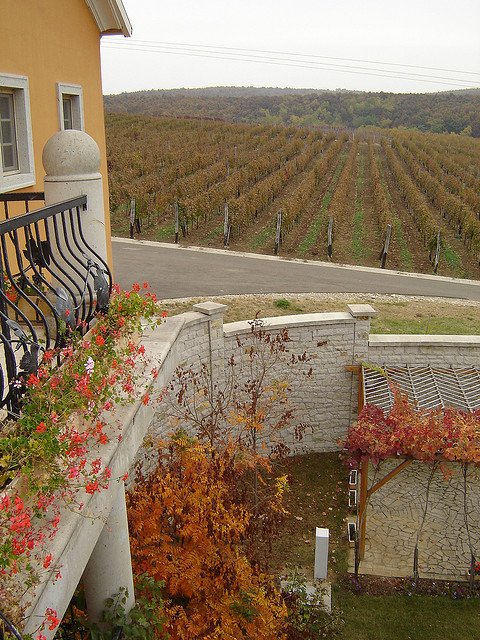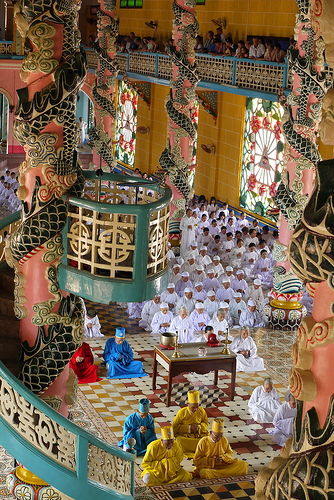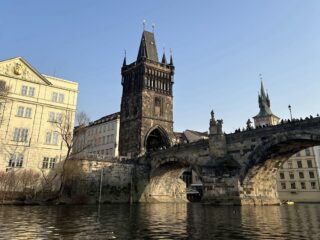By Katy Kelleher
 When Americans talk wine, there are a few places that tend to pop up in conversation again and again. France, Italy, California and most recently, South America tend to dominate the vinous chatter, but have you ever heard mention of Eger, Hungry? I didn’t think so.
When Americans talk wine, there are a few places that tend to pop up in conversation again and again. France, Italy, California and most recently, South America tend to dominate the vinous chatter, but have you ever heard mention of Eger, Hungry? I didn’t think so.
Eger is a small city several hours north of Budapest and east of the Matra Mountains. I was lucky enough to visit the area a few years ago when I was living and studying abroad in Budapest. I spent five months in Hungary, from August to January, but for some reason, fall is the season that sticks in my head the most. The day I traveled to Eger was colder than most autumn days, but the view from the train was golden and picturesque. As always, I spent the entire train ride with my eyes glued to the scene outside my window, which seemed to swiftly move through time as well as place. One moment I would be staring at a thoroughly modern town, passing houses with satellite dishes in their yards and motorcycles in their driveways, and the next I would be gazing at tiny rural farms, complete with clotheslines and placidly grazing cows.
This is part of the appeal of Hungary. The trappings of the twenty-first century seem to rest uneasily atop of hundreds of years of history and tradition. I don’t mean to suggest that the country is stuck in the past, but rather that Hungary is a place where time seems to run in loops rather than the straight lines of American history. On occasion, I found this difficult to navigate, but it remains one of Hungary’s most charming traits.
Another attraction that keeps me dreaming of Hungary is the plentiful, cheap, unique wine. There are two types of wine that Hungary is known for: The thick, dark, bold reds known as “Bull’s Blood” and the sweet, full-bodied whites called Tokaj. However, vineyards in Hungary produce many types of grapes that are transformed into tastes for every palate, from fruity, chocolatey reds to crisp, dry whites. It may not have made it into Sideways, but Eger is a wine lover’s dream.
I didn’t know I was a wine lover until I went to Hungary. Living on a college student’s budget, I rarely got the chance to taste truly great wine, and I almost never had the opportunity to sample as many types as I might want. But Eger is perfectly fitted to tasting and testing, taking a sip of one wine before moving on to another. You may ask, where exactly can you find this magical place? In the Valley of the Beautiful Women, of course.
The name is medieval in origin, and though romantic, doesn’t truly reflect the character of the neighborhood. Located a short walk outside the town center, the wine tasting region might more accurately be called “Circle of a Thousand Drinks.” Within this compact cobblestoned area are nestled dozens of stone buildings with Tolkien-esque doors. Behind each wooden entryway lies a different wine cellar representing a local vineyard, all of which are happy to pour you a sample—or fill whatever container you may bring, be it glass bottle or plastic canteen. I arrived in Eger in the late morning and, after sightseeing in the main city, I ventured out toward the Valley, where I had been told by a Hungarian acquaintance that I would find cheap, plentiful, glorious wine. With this advice in mind, I spent a very pleasant afternoon wandering from door to door. Some of the cellars had traditional folk bands providing music, while others kept me sober with their selection of hearty foods. (One particularly Hungarian snack is a slice of bread spread with butter and covered with raw onions and paprika. It is surprisingly good, and shockingly common throughout the country. Eger was no exception.) I tried reds, whites, and roses. I sipped and I snacked, listening to the chatter of a foreign language pattering around me like rain on a roof. I even spent a heady couple of minutes dancing with an elderly Hungarian man who spoke no English but happily shouted the German word for cheers (“Prost!”) every time one of his companions stopped to take a drink.
The sunny day quickly faded into dusk, and as the sun went down, so did my desire to consume any more liquid. Armed with several keg-shaped plastic liters of wine, purchased from my favorite of the wine cellars, I tramped back into town, where I enjoyed a piping hot bowl of goulash at one of Eger’s many restaurants. Before leaving the city for good, I took a few minutes to walk up to Eger’s picturesque castle, where I marveled at the city’s magnificent fortifications, its heavy medieval architecture and swooping baroque buildings. Tipsy from the wine and warm from the soup, I remember clearly the feeling of being enveloped by the quiet, steadfast whispers of time. I felt at once both aware of my own ignorance and delicious youth, yet comforted by the presence of immense age.
And then, after spending an exhausting and exhilarating day trying new things and climbing old stone steps, it was time to go home. I boarded the train and went back to Budapest, taking my newfound knowledge with me.











